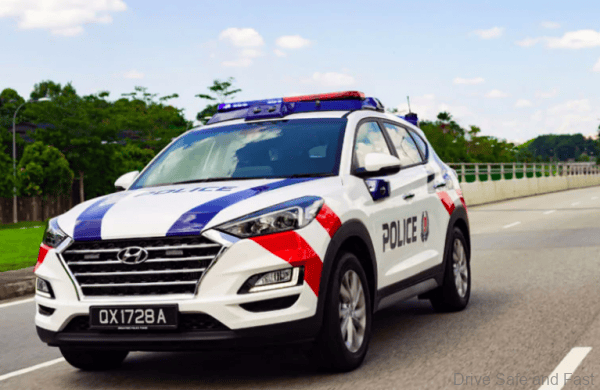The Singapore Police has just released information on their latest crime fighting tool, it is a Hyundai Tucson SUV with some latest ‘home grown’ technology fitted inside to response faster to criminal activity on the island.

The Singaporean Police Force has announced that over 300 new Hyundai Tucson SUVs will be hitting the road by 2024.
These new SUVs will act as Fast Response Cars (FRC), which are main police cars in the island nation. Replacing the fleet of sedans that are currently enlisted such as the Hyundai Elantra and Toyota Corolla Altis.
Developed in collaboration with the Home Team Science and Technology Agency with the help of feedback from officers on the ground, this next-generation Singaporean police car has a lot of new technology in an effort to keep up with the changing times.

The headline feature on these new Tucson FRCs are the automated number plate detection feature. Visual sensors under the side mirrors are not only able to detect vehicle number plates on the move, but also determine make, model and colour of the vehicle. In other words, the police will be able to use technology to automatically identify any vehicle near the police car, without having to rely on the eyes of the officers within it.
Other cool new technology to be featured in this new cop car includes an integrated drone disruption function to detect, locate and if needed disrupt any drone activity. Cameras mounted on the roof and inside the police car also enables 360º footage to be live-streamed to police headquarters. Furthermore, the RFID equipment tagging in the boot of these new FRCs are able to inform officers about missing equipment in the boot of the SUV.

The usual slew of police sirens and signals have been given an upgrade with the addition of speakers emit a low-frequency rumble. The Singaporean police says it is to warn other road users, but then again this could also be used to make the 1.6 litre turbocharged four cylinder under the hood of the Tucson sound like a V8. There is space to mount spotlights for low-light conditions and search operations if the need arises.
Officer comfort has been taken into account too, in this new patrol car. The cabin of the civilian Hyundai is already a nice enough place to be in, but for the police version the front seats have special cut outs in the base to accommodate for the large, bulky belts of police officers. A large plastic screen between the front and rear compartment is also standard equipment.

On the topic of the rear compartment, the back seats where suspects reside are nothing like the civilian Tucson. The leather seats have been removed and in its place is a hard plastic bench with no-slip grooves. The absence of conventional seats means that suspects can’t hide contraband within the cushions, and it also makes it easier to maintain and keep clean.
The rear seat belts too have a special mechanism so that the officers do not have to reach over to belt the suspects in to prevents incidents of suspects springing a surprise attack on the officers.
If you think about it, the SUV is the perfect vehicle for police use. Police often need a vehicle that is both practical and fast, and what is a better choice than a segment that already has Sport and Utility in the name.

Some of these new Hyundai Tucson FRCs are already being utilised by the Singapore’s Ground Police Force for quick emergency response. Meanwhile the American police are also gradually moving away from their iconic Crown Victoria interceptors and gradually turning towards the Ford Expedition and other American SUVs.
Opinion and Text by Joshua Chin